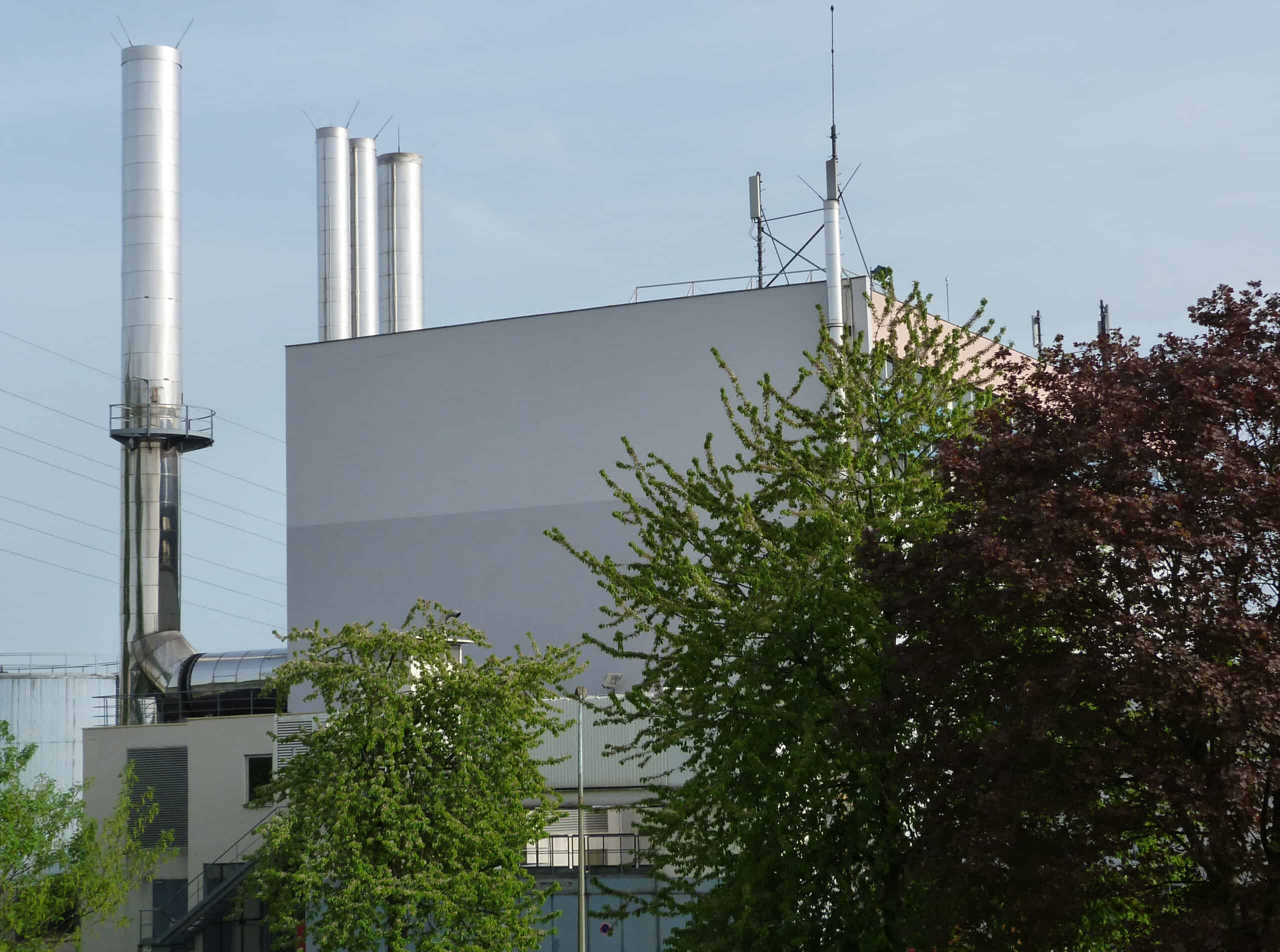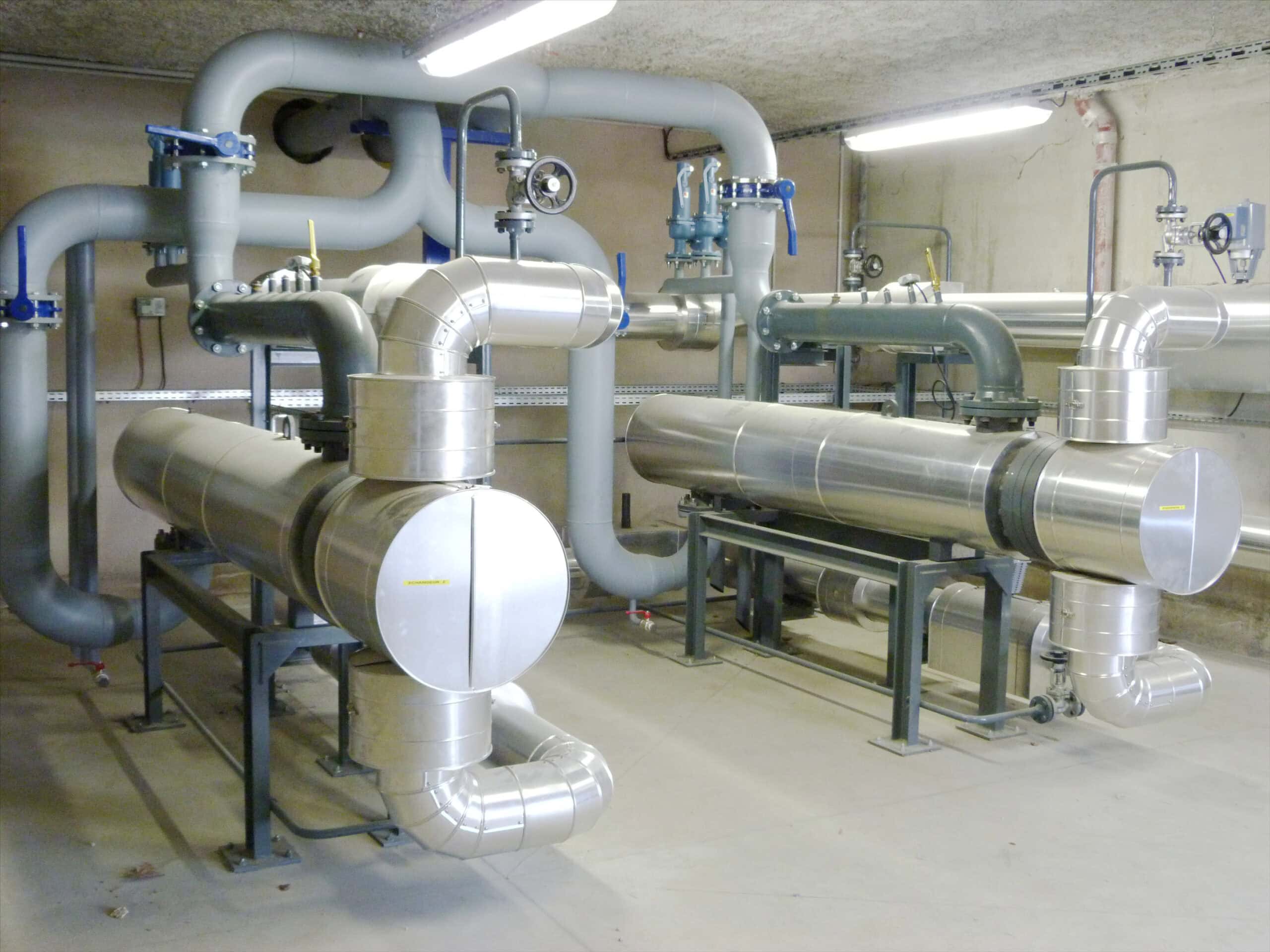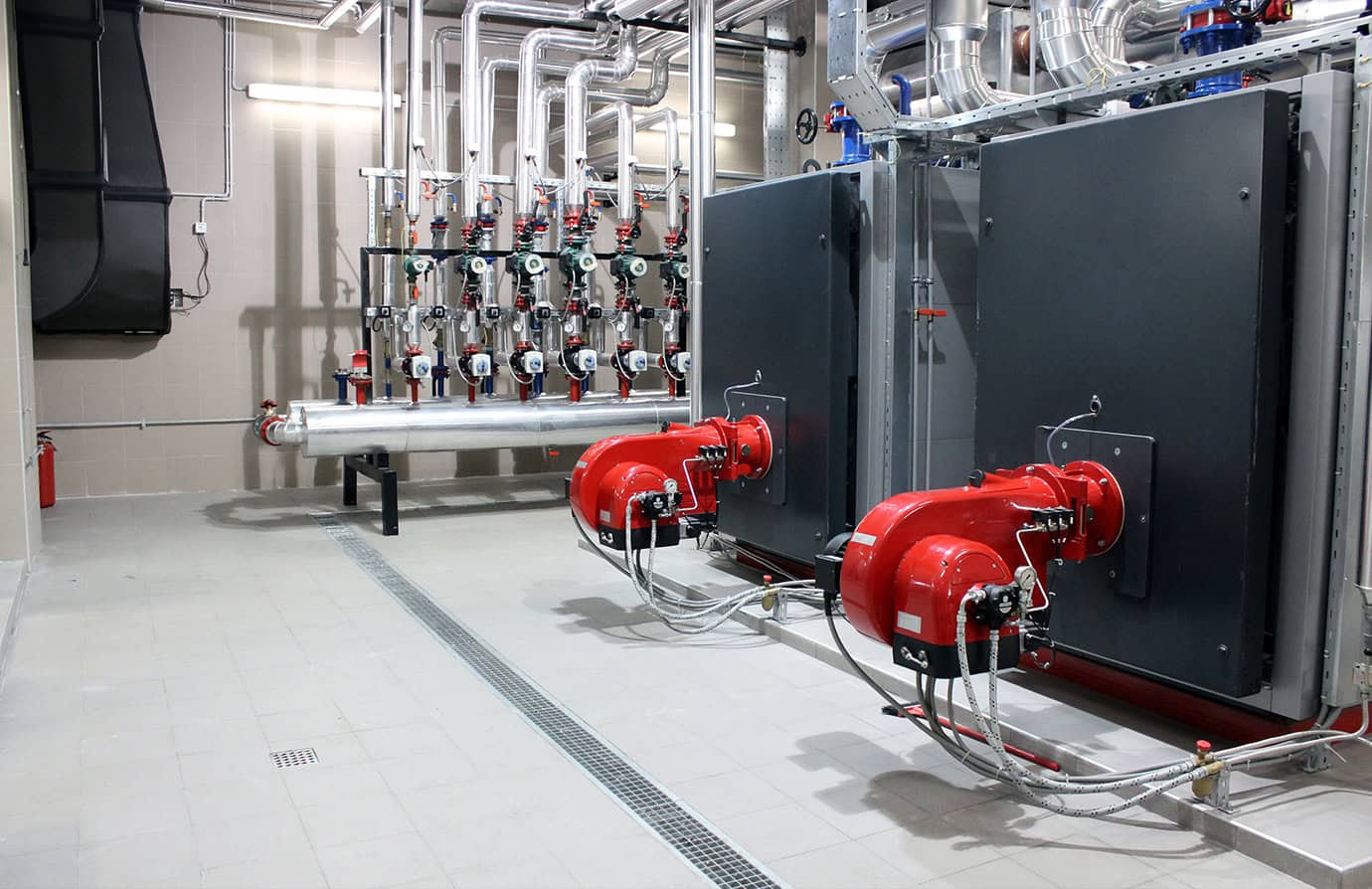Control and performance of central boiler plants in district heating networks

The integration of a SOFREL S4TH telemetry system in heat production plants offers multiple benefits:
- Continuous monitoring of all operational parameters, including the status of pumps and motors in real time.
- Regular transmission of collected data to supervision systems for optimal monitoring.
- The ability to intervene at any time and remotely for direct control of the installation.
- With the SOFREL S4TH telemetry equipment, the boiler can be controlled directly. This system includes a standard automation workshop to perform complete regulation of the installation.
For installations already equipped with regulators, the telemetry system acts as a unifier, centralizing information from all equipment (regulators, meters, etc.) and transmitting essential data (flow and return temperatures, furnace temperature, flue temperature, etc.) to central stations. It generates alerts in case of faults (sensors, overheating, low water levels, circuit breaker trips, threshold exceedances, etc.).
Telemetry allows the operator to communicate remotely with regulators and adjust settings to optimize regulation.
Control and regulation of substations for a high-performance district heating network

SOFREL solutions for the remote management and regulation of the installation enable energy meters to be read for billing purposes. The regulation of outdoor temperatures is fully managed by the remote management unit, thanks to its integrated automation functions and its “heating” library.
All consumption data, measured temperatures, pump recirculation operation times, etc., are timestamped, recorded, and regularly sent to the SCADA stations.
Substations are the delivery points for the energy produced by the central boiler plant.
The energy exchange, as well as the distribution of heating and Domestic Hot Water (DHW) to the secondary circuit, takes place at the substations, requiring continuous monitoring. The heat exchanger thus replaces a traditional boiler and ensures the distribution of heat to homes, offices, etc. Like a boiler, the heat exchanger must be regulated by a remote management system.
Energy consumption monitored in real-time
The detailed analysis of energy consumption and returns from the transport network (primary circuit) provides a better understanding of the network’s operation. It allows for the quantification of energy demand from users and helps anticipate and optimize fuel purchases. In the case of a biomass boiler, this enables prioritizing the use of renewable energy and resorting to fossil fuels only during peak consumption periods.
Towards a connected and efficient management of district heating networks
The remote management of district heating networks integrates with heat production, distribution, and heat exchange in substations to secondary circuits. With our remote regulation solutions, you can control your installations and monitor the energy produced and distributed in real-time. This ensures optimal management, preventive maintenance, and consistent comfort for users.

